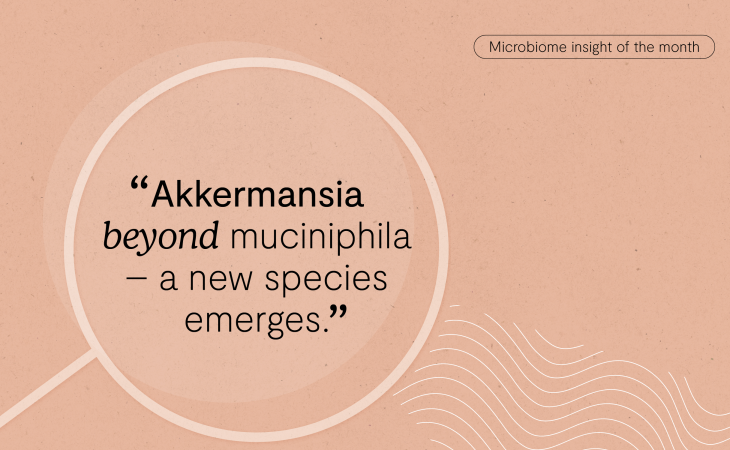Akkermansia beyond muciniphila – a new species emerges
Introduction
Akkermansia muciniphila is a frequent and abundant bacteria in the adult gut microbiome and often a key species of interest when reviewing microbiome test results. The name muciniphila highlights this species’ ability to thrive in the mucous layer of the intestinal lining, where it helps to regulate mucosal barrier function.
Since its discovery, A. muciniphila has become associated with positive impacts on cardiometabolic health, weight management, inflammation and immune function, while decreased abundance has been linked to the progression of several chronic diseases1.
Until recently only one other species of Akkermansia relevant to humans has been identified – Akkermansia biwaensis. Now, another species, Akkermansia massiliensis sp. nov. is emerging as the second most prevalent species of Akkermansia in the human gut.
In their report on the new species, Kumar et al. explore the metagenomics of Akkermansia and discuss the potential benefits of A. massiliensis sp. nov. for human health.
Methods
Using high-resolution clustering algorithms that define unique DNA sequences, Kumar et al. examined the prevalence and abundance of A. muciniphila, A. massiliensis sp. nov., and A. biwaensis in the human gut from three large scale studies where faecal genomic data were collected.
Further investigations examined the role of A. massiliensis sp. nov. in diet-induced obese mice and compared the production of the short-chain fatty acid propionate and vitamin B12 between A. muciniphila and A. massiliensis sp. nov.
Results
- A.biwaensis was the least detected species. A. muciniphila was the most prevalent and abundant in all cohorts, whilst A. massiliensis was the second most prevalent.
- Only a small percentage of individuals were co-colonized with both species which suggests they may be mutually exclusive.
- In one dataset comparing Akkermansia species prevalence between obese and lean individuals, muciniphila was observed in 82% of obese individuals and 87.7% of lean individuals. A. massiliensis sp. nov on the other hand was observed in 26% of lean individuals, but no obese individuals, suggesting potential benefits for metabolic health that warrant further research.
- Commenting on a study of diet-induced obese mice2, the authors note that massiliensis sp. nov. can degrade extracellular adenosine triphosphate (eATP), an inducer of inflammation in the gut, and implant and replace the native A. muciniphila. This raises questions about possible competition between these species.
- A.massiliensis sp. nov. synthesises both vitamin B12 and propionate, whereas A. muciniphila can only produce propionate in the presence of vitamin B12. The authors hypothesise that some Akkermansia species may play a role in shaping the gut microbiome by providing B12 to other bacterial species.
Conclusion
Newly identified Akkermansia species are providing new insights into this important genus. Initial research suggests that, for many, A. massiliensis sp. nov. and A. muciniphila may be mutually exclusive in the human gut microbiome. Observed differences in prevalence of A. massiliensis between the guts of obese and lean individuals could hint at significant metabolic benefits for this species. Animal and invitro studies show A. massiliensis sp. nov. can produce propionate and vitamin B12 and degrade eATP, meaning it may be helping the health of the ecosystem, as well as host health.
Key clinical takeaways
Further human studies are needed before any clinical recommendations can be drawn. However, studies to date indicate a potentially unique role of A. massiliensis sp. nov. in the human gut microbiome. Using diet and lifestyle strategies to support the abundance of Akkermansia may have much wider benefits for our health than previously thought.
Online at
https://www.oaepublish.com/articles/mrr.2024.28




